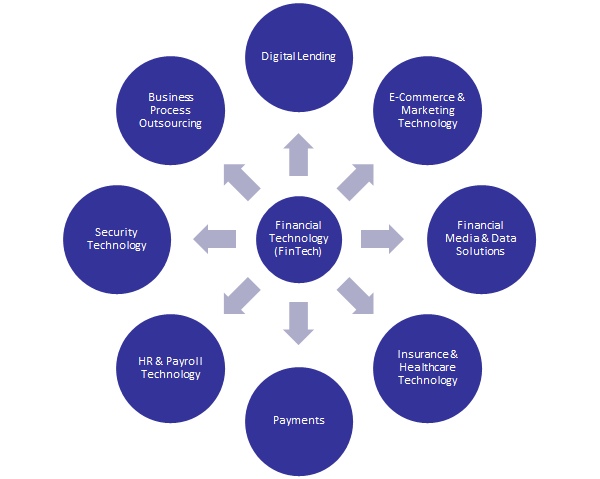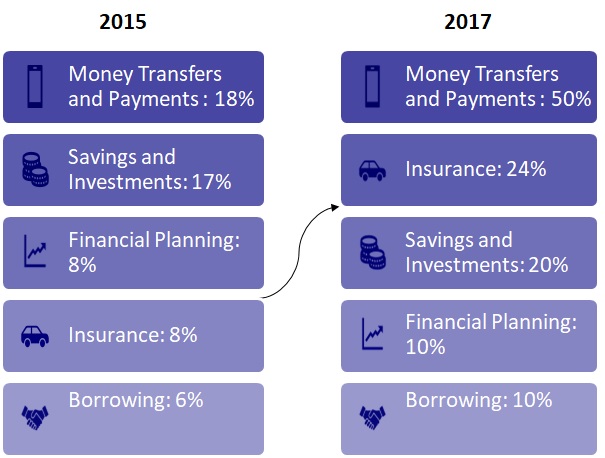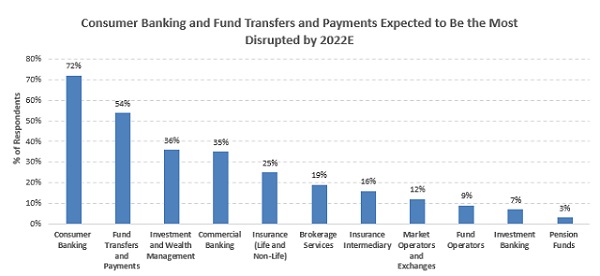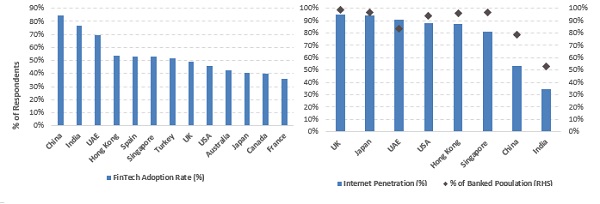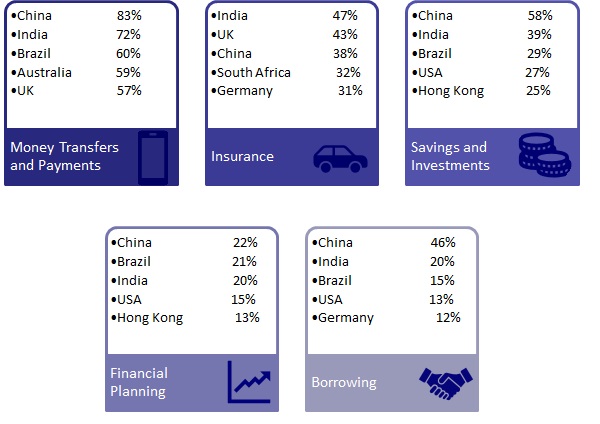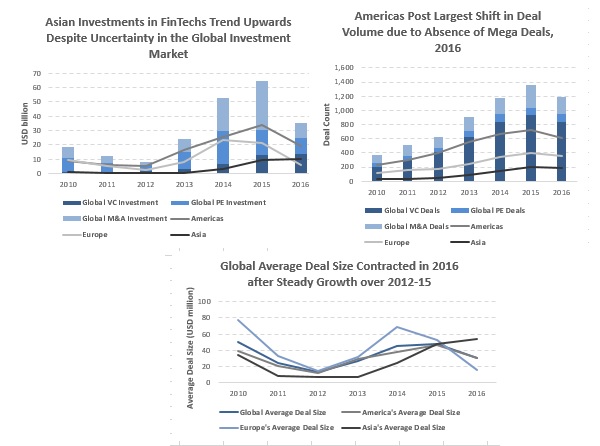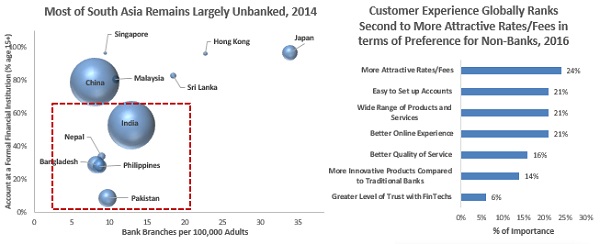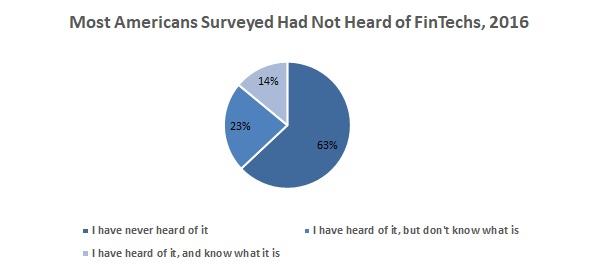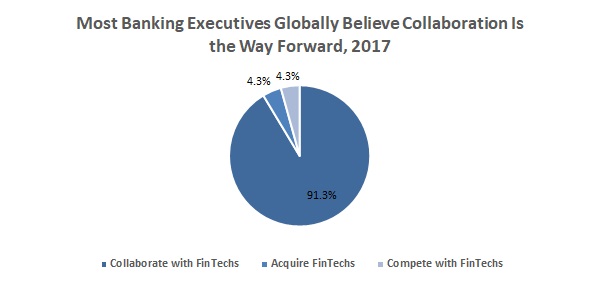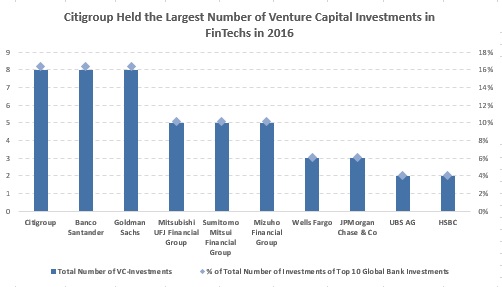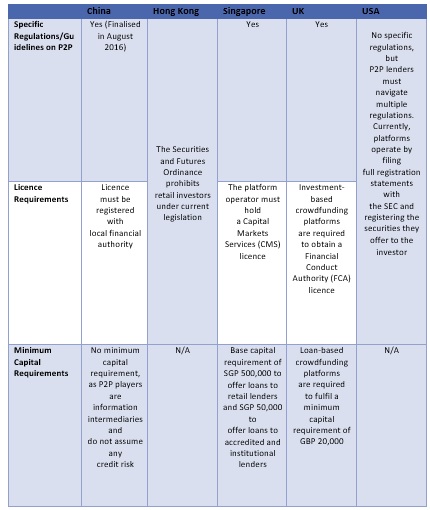FinTechs versus Banks: Compete or Collaborate? An Insight on the Asian Market
|
Following the 2008 global financial crisis, gaining customer trust has been a key challenge for financial institutions. At the time that most banks were recovering from the crisis, focusing on themselves, and dealing with new regulations, technology made its way into the financial sector, launching products and services that are now becoming vital to people’s lives. |
|
This led to the dawn of the FinTech era, where most retail customers, not satisfied with using a single entity to meet all their financial needs, were growing increasingly receptive to new and innovative solutions. This was the case in the Asia Pacific region, especially in China and India, which recorded the highest adoption of FinTech services in 2016, despite low internet penetration. As FinTechs continue to capitalise on these unmet needs across Asia and other parts of the world, industry experts remain critical, and believe this will lead to the disruption of the traditional financial services sector. While this is true, many also believe that FinTechs herald the end of banking as we know it — but is this an overstatement? While it is true that the FinTech market has potential for rapid growth, bolstered by a range of macroeconomic factors, it needs to overcome many challenges at present. One of the major challenges most FinTechs globally face is a lack of customer awareness of their presence (63.0% of 1,000 survey respondents in the USA as of 2016 stated they had never heard of FinTechs before). Moreover, most customers are sceptical about the lack of regulations imposed on FinTechs, in turn resulting in a lack of trust, despite their more appealing product offering. Based on our analysis, we believe the way forward to overcoming these challenges is collaboration with financial institutions. In light of this, most banking institutions are already investing their money in start-up FinTechs. We believe this will help banks combine FinTechs’ technological know-how with the banks’ more in-depth knowledge of financial products in order to offer a more synergetic model that will deliver a better and more cost-effective customer experience. |
|
FinTechs Likely to Disrupt Traditional Financial Services Sector |
|
As the digital age progresses, the use of technology is ever-increasing in almost all areas. According to industry sources, the term ‘Financial Technology’, or ‘FinTech’, is often used to refer to companies that combine the use of modern innovative technology with products and services that the traditional financial services industry offers. Companies in the FinTech industry can be divided into business segments based on their distinctive business models. The present primer outlines key segments of the FinTech industry and the institutions operating in that space and highlights the sub-sectors that are changing the fastest. |
|
FinTechs Cater to Different Segments of the Financial Services Industry |
|
|
|
According to Ernst & Young’s (EY’s) FinTech Adoption Index 2017, money transfer and payment adoption globally rose to 50.0% in 2017 from just over 18% in 2015. This was attributed to new payment services such as online digital-only banking and mobile phone payments offered at checkouts. Meanwhile, insurance adoption rose to 24.0% in 2017 from 8.0% in 2015, largely due to the expansion of insurance into telematics and wearables, as well as the introduction of insurance premium comparison services. Furthermore, in consumer and commercial lending, the emergence of online platforms (such as Lu.com in China) has allowed individuals and businesses to conduct lending and borrowing between each other rather than depend on a financial intermediary. All these developments have led many in the financial services industry to believe that FinTechs will lead to the disruption and eventual collapse of the traditional financial services system. |
|
According to PricewaterhouseCoopers’ Global FinTech Survey 2017, approximately 88% out of a total of 1,308 business professionals agreed that their businesses were at risk from standalone FinTech companies. In addition, approximately 72% out of a total of 1,297 business professionals surveyed expect consumer banking to be disrupted the most by 2022E, followed by Fund Transfers and Payments (about 54%) and Investment and Wealth Management (about 36%). All of this has raised concerns in the financial services industry as FinTechs aim to capitalise on a customer-centric model that most financial service providers have failed to capitalise on. Key failures include being unable to keep up with new customer expectations. |
|
Insurance Moves up the Ranks to Become the Second-Most Widely Offered Service by FinTechs, 2017 |
|
|
|
Note: The figures show the average percentage of respondents who reported using one or more FinTech services in that category |
|
More Asian Incumbents Believe Their Businesses Are at Risk from the Rise of FinTechs, 2017 |
|
|
|
Note: Survey was of financial services executives across the globe |
|
|
|
|
|
Despite Low Internet Penetration, Asia-Pacific Region Registers the Highest Usage of FinTech Services Globally; China Leads |
|
According to the World FinTech Report 2017 by consulting firm Capgemini and social networking service provider LinkedIn, as of 2016, 50.2% of a total of 8,000 financial services customers across the world said they used financial services from at least one non-traditional firm (FinTech) for banking, insurance, payments, or investment management. Among these segments, FinTechs have made a significant impact in investment management, where 17.4% of the total customers say they rely solely on FinTechs, while an additional 27.4% use them alongside traditional providers. In terms of geographic split, the highest average percentage of users in 2016 were seen in the Asia-Pacific region (58.5%), followed by North America (42.7%) and Europe (41.7%). By country, the highest rates of FinTech adoption in 2016 were registered in China (84.4%), followed by India (76.9%) and the UAE (69.6%). High adoption rates in these countries were due to FinTechs excelling at tapping into their tech-literate yet financially underserved populations. |
|
China and India Register the Highest Usage of FinTech Services Despite Being Financially Underserved and Recording Low Internet Penetration, 2016 |
|
|
|
Note: The graph refers to adoption rates and not to FinTech penetration, as data was collated via a survey conducted by Capgemini |
|
Source RHS Graph Compiled by UZABASE based on the World Bank Global Financial Development Index and World Bank Data Bank with Internet Live Stats |
|
Note: Internet penetration recorded for 2017; percentage of banked population for 2014 (latest available) |
|
China Ranks High Across Four out of Five FinTech Service Categories, 2017 |
|
|
|
Note: The figures show the average percentage of respondents who reported using one or more FinTech services in that category |
|
|
|
Despite Recent Slowdown, Investment Outlook Positive due to Rising Financial Needs, Growing Digital Connectivity, and Technological Innovation |
|
Following exponential growth in total investments in FinTechs, (up 8 times over 2012-15 to USD 64.7 billion in 2015), investments contracted 44.8% YoY to USD 35.7 billion in 2016. The total number of deals fell 14.3% YoY to 1,188 deals in 2016, following a steady increase over 2012-15. Investments grew rapidly over 2012-15 due to investors’ strong interest in FinTechs. However, in 2016, investments were adversely affected by significant uncertainty in the global investment market: the Brexit vote in the UK, the US presidential election, and drastic exchange-rate fluctuations for USD, among other economic factors. |
|
Growth in investments over 2012-15 was driven largely by M&A activity (cumulative contribution over 2010-16: 42.6%), which grew 56.3% over the same period, with the Americas contributing 51.1%. Conversely, the contraction of investments in 2016 was driven by a fall in M&A activity (79.0% of the total decline). However, uncertainty in the investment market did not affect Asian FinTech investments. Global venture capital investments (VC) grew 7.1% YoY in 2016, with the Asian market growing 7.4% YoY in 2016. This was mainly due to a large VC funding round of USD 4.5 billion in 2016 (33.1% of total VC investments in 2016) for China-based FinTech company Ant. |
|
|
|
|
|
Note: Tables included for reference |
|
Note 1: Total investments made in FinTechs were assumed to be the sum of VC, PE, and M&A investments |
|
Note 2: Only the top three regions have been analysed |
|
|
|
Refer to Appendix for more Insights on the Global FinTech Unicorns |
|
Despite a slowdown in investments in 2016, we believe that future investments in FinTech across the world will continue to grow, driven by the rising popularity of FinTech services. Some of these key themes have been identified for the Asian market as follows: |
|
|
While most Asian economies have seen significant growth in GDP in recent years, these economies have not experienced similar growth in their respective traditional banking sectors. For example, China recorded a total of 8.0 bank branches per 100,000 adults in 2014 (latest information available), significantly lower than other global peers’ such as Japan (33.9), the USA (28.2) and Europe (28.0). On the other hand, some Asian economies recorded a high percentage of unbanked population. We believe that this phenomenon has created a favourable environment for FinTech disruption in emerging markets such as South Asia, where a majority of financial needs are yet to be served. According to EY’s Global Consumer Banking Survey of 2016, in China, traditional banks were seen as offering homogenous and uncreative products that did not satisfy consumer needs. While competitive rates and fees matter, most retail consumers seek a better customer experience. This was also the case in countries such as Russia, India, and Malaysia, where attractive rates/fees did not even make it to the top three reasons for preferring non-traditional banks, even while the global average indicated that attractive rates/fees were the top reason. |
|
|
|
Note 1: Bubble size represents population as of 2014 |
|
Note 2: Latest available information for bank branches and banked population is for 2014; consistency has been maintained with bubble size |
|
Source RHS Graph: EY, “Global Consumer Banking Survey 2016” |
|
Note: The survey was conducted for 55,000 consumers around the world |
|
|
According to EY’s FinTech Adoption Index 2017, young consumers were the largest users of FinTech products and services. As of 2017, according to the report, the age group most likely to use FinTechs was identified as the 25 to 34-year-old consumer group, followed by the 35 to 44-year-old age group. |
|
|
|
Some Asian economies, despite having less developed physical banking infrastructure than the Americas and Europe, excel in digital infrastructure. As of June 2017, according to Internet World Stats, the number of internet users globally reached 3.9 billion users (51.7% of the total global population); Asian users dominated (49.7% of total global users), followed by European users (17.0%) and Latin American users (10.4%). In June 2017, China dominated 38.1% of total Asian users, followed by India (23.8%) and Indonesia (6.8%). Over 2009-17, the total number of Asian users doubled to 1.9 billion users in 2017, from 0.8 billion users in 2009. While this trend held true for most Asian peers, relatively lower penetration in China and India (versus countries such as Japan and Singapore) creates ample opportunities in the digital financial space in Asia, as internet penetration is likely to continue to grow. |
|
|
|
Note: Internet World Stats; June 2010, December 2011, June 2012, December 2013, June 2015, June 2016, and June 2017 |
|
In addition, most digital users connect to the internet via smartphones — now a popular trend in digital connectivity. However, Statista predicts global smartphone penetration to reach 37.0% in 2020E from 25.3% in 2015 (latest information available), with China and India expected to reach smartphone penetration rates of 54.9% and 29.0% respectively by 2020E. This implies that most countries are likely to continue to see increased use of smartphones; this offer customers convenience and mobility to conduct transactions. |
|
|
|
Collaboration to Mutually Benefit Traditional Banks and FinTechs |
|
Financial institutions such as banks have a long history, but, as discussed, advancements in technology and financial institutions’ failure to cater to customer expectations have made way for FinTechs’ recent growth. Despite the positive industry outlook, most FinTechs are yet to achieve their desired scale of operations, and this was evident in the decline in investments in 2016. We identified two key barriers to entry and expansion that FinTechs are likely to face: |
|
|
According to a survey by Statista in the USA in 2016, almost 63% of 1,000 respondents stated they had never heard of FinTechs before. This is a phenomenon applicable not only to the USA, but also to other countries including emerging economies. However, rather than implying that most people do not use FinTech services such as internet and mobile payments, it implies they are not aware such services are classified as FinTechs. This means FinTechs have a long way to go in terms of broadening awareness and driving the usage of their products and services. |
|
|
|
On the other hand, FinTechs are not subject to as many regulations as the banking sector, and this has helped them develop creative and innovative solutions to focus on providing customised financial solutions. However, this very same phenomenon has caused alarm amongst some consumers, especially those of the older generation, as they are unwilling to trust their money to FinTechs. This has caused most countries to increase their focus on regulatory measures. For instance, regulatory implementations are currently underway for P2P lending: online lending platforms that operate as marketplaces and link borrowers to lenders. This means that these P2P lending platforms do not take deposits or lend themselves; nor do they earn interest income directly from borrowers. |
|
Refer to Appendix for more Insights on Regulative Measure for P2P Lending |
|
Consequently, according to Statista, while FinTechs aim to drive down cost to make their product offering cheaper for their consumer, they are yet to bring down their fee structures in line with those offered by traditional institutes. Furthermore, most FinTechs have not diversified their offering and tend to focus on one or two segments. This contrasts with banks, which offer a plethora of products and services. These differences have given rise to the need for collaboration between the two. According to the World Retail Banking Report 2017 by Capgemini, a survey conducted in 2016 among banking executives worldwide, 91.3% of all respondents agreed that collaboration was the way forward. We agree with this sentiment, as we believe that collaboration will help both entities in the following ways: |
|
|
|
|
|
While collaboration is yet to be seen on a global scale, most banks such as Citigroup, Banco Santander, and Goldman Sachs have already begun investing in FinTech start-ups. As of 2016, as per CB Insights, Citigroup had the largest share of VC-backed investments in FinTechs globally. However, while investments are likely to continue, we believe banks are more likely to use these opportunities to study their competitive counterparts, and this should help them combine their resources with FinTechs’, in order to achieve a synergetic model that focuses on a well-rounded customer experience. |
|
|
|
APPENDIX |
|
1. Top-Ten Global FinTech Unicorns |
|
|
|
2. P2P Regulations in Core FinTech Markets |
|
Source: EY and DBS, “The Rise of FinTech in China” 2016 — China Banking Regulatory Commission, Financial Conduct Authority, Monetary Authority of Singapore, Securities and Futures Commission of Hong Kong, 2016 |




